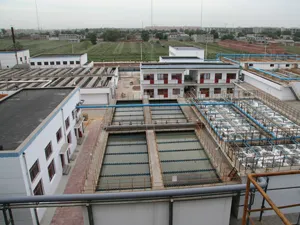Understanding Plastic Additives A Comprehensive Overview
Plastic additives play a pivotal role in enhancing the performance, durability, and functionality of plastic materials. As the use of plastics has expanded across various industries—from packaging and construction to automotive and electronics—the need for effective additives has become increasingly critical. This article explores the different types of plastic additives, their functions, and their significance in modern applications.
What are Plastic Additives?
Plastic additives are substances added to plastics in order to modify their properties and improve their processing. These additives can be natural or synthetic and are incorporated into plastic formulations to achieve desired characteristics that are not achievable through resin alone. Without these additives, many plastics would not be suitable for their intended applications, rendering them too brittle, unstable, or otherwise inadequate.
Types of Plastic Additives
1. Stabilizers One of the most important classes of plastic additives, stabilizers, are used to prevent the degradation of polymers under environmental stresses such as heat, light, and oxygen. For instance, UV stabilizers protect plastics from the harmful effects of ultraviolet radiation, while thermal stabilizers enhance resistance to high temperatures.
2. Plasticizers These additives are used to increase the flexibility, elasticity, and workability of plastics. Commonly added to PVC, plasticizers reduce the brittleness and make the material easier to process. While effective, it’s essential to select non-toxic plasticizers, especially in applications involving food packaging.
3. Fillers Fillers are added to enhance the mechanical properties of plastics, reduce costs, and improve performance. Common fillers include talc, calcium carbonate, and glass fibers. They can alter the density, thermal conductivity, and strength, contributing to lightweight applications without sacrificing performance.
4. Flame Retardants Safety is paramount in many industries, and flame retardants are critical additives that help reduce the flammability of plastic materials. By chemically reacting during combustion, these additives prevent or slow the spread of fire, making them essential in electronics, automotive parts, and construction materials.
plastic additives list

5. Colorants The aesthetic appeal of plastic products often relies on colorants, which can be pigments or dyes. Colorants not only provide visual appeal but can also enhance the material’s resistance to UV radiation and other environmental factors.
6. Antioxidants These additives are used to prevent the oxidation of polymers during processing and in end-use applications. Oxidation can lead to a decline in mechanical properties and cosmetic defects, making antioxidants essential in maintaining the integrity of plastic products.
7. Antistatic Agents In various applications, static electricity can cause performance issues. Antistatic agents are used to reduce static buildup, particularly in electronics packaging, preventing dust accumulation and potential electrical malfunctions.
Importance of Plastic Additives
The significance of plastic additives extends far beyond mere enhancement of aesthetics or production efficiency. In fact, they are crucial for the functionality and safety of numerous products. For instance, in the automotive industry, flame retardants and stabilizers are indispensable for compliance with safety regulations, while plasticizers improve the comfort and usability of interior components.
Moreover, as sustainability becomes a pressing concern, the development of eco-friendly plastic additives has gained momentum. Many manufacturers are exploring bio-based additives and recycling techniques to minimize environmental impact, ensuring that the plastic products of tomorrow are both effective and sustainable.
Conclusion
Plastic additives are essential components in the world of materials science. They not only improve the performance of plastics but also support the development of innovative solutions across diverse industries. Understanding the various types of additives and their functions can facilitate better product development and enhance the properties of plastics used in everyday applications. As the industry evolves, continued research and development in the field of plastic additives will be crucial in addressing both performance and environmental challenges, making our plastic-dependent society more sustainable.

